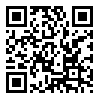1. Angres DH, Bettinardi-Angres K. The Disease of Addiction: Origins, Treatment, and Recovery. Dis Mon. 2008;54(10):696-721. [
DOI:10.1016/j.disamonth.2008.07.002] [
PMID]
2. Cleck JN, Blendy JA. Making a bad thing worse: adverse effects of stress on drug addiction. J Clin Investig. 2008;118(2):454-61. [
DOI:10.1172/JCI33946] [
PMID] [
PMCID]
3. Koob GF. The neurobiology of addiction: a neuroadaptational view relevant for diagnosis. Addiction. 2006;101(S1):23-30. [
DOI:10.1111/j.1360-0443.2006.01586.x] [
PMID]
4. Volkow ND. Drugs, brains, and behavior: The science of addiction. 2010. Contract No.: 2011.
5. Johnson BA. Addiction Medicine. Science and Practice. Publisher: Springer. 2011. [
DOI:10.1007/978-1-4419-0338-9]
6. Pervanidou P, Chrousos GP. Early-Life Stress: From Neuroendocrine Mechanisms to Stress-Related Disorders. Horm Res Paediatr. 2018;89(5):372-9. [
DOI:10.1159/000488468] [
PMID]
7. Kazakou P, Nicolaides NC, Chrousos GP. Basic Concepts and Hormonal Regulators of the Stress System. Horm Res Paediatr. 2023;96(1):8-16. [
DOI:10.1159/000523975] [
PMID]
8. Kodavanti UP. Stretching the stress boundary: Linking air pollution health effects to a neurohormonal stress response. Biochim Biophys Acta - Gen. 2016;1860(12):2880-90. [
DOI:10.1016/j.bbagen.2016.05.010] [
PMID]
9. Vodička M. The effect of stress on regulation and regeneration of glucocorticoids in animal models differing in response of hypothalamo-pituitary-adrenal axis. Univerzita Karlova, Přírodovědecká fakulta; 2021.
10. Raja Hadi BDS. Assessment of cortisol as salivary psychological stress marker in relation to temporomandibular disorders among a sample of dental students. Dentistry. 2015;27(2):86-92. [
DOI:10.12816/0015300]
11. Miller WL, Flück CE, Breault DT, Feldman BJ. The adrenal cortex and its disorders. Sperling Pediatric Endocrinology: Elsevier; 2021. p. 425-90. [
DOI:10.1016/B978-0-323-62520-3.00014-2]
12. Ahmed JN. Determination of the effect of stress on the salivary cortisol level among sample of university students having myofacial pain. 2013.
13. Theilade E. Factors controlling the microflora of the healthy mouth. Human Microbial Ecology1990. p. 1-56. [
DOI:10.1201/9781003068020-1]
14. Marsh P, Martin M, Marsh P, Martin M. The resident oral microflora. Oral Microbiol. 1992;1:27-55. [
DOI:10.1007/978-1-4615-7556-6_3]
15. Seki M, Yamashita Y, Shibata Y, Torigoe H, Tsuda H, Maeno M. Effect of mixed mutans streptococci colonization on caries development. Oral microbiol immunol. 2006;21(1):47-52. [
DOI:10.1111/j.1399-302X.2005.00253.x] [
PMID]
16. Hatim FA, Diajil AR, Al-Mizraqchi AS. The Study of Oral Microbiological Changes in non-Hodgkin Lymphoma Patients Receiving Chemotherapy. Scopus Ijphrd Citation Score. 2019;10(01):1107. [
DOI:10.5958/0976-5506.2019.00210.9]
17. Al-Ubaidi A. The prevalence of streptococcus mutans biotypes among preschool children 1993.
18. Moeller KE, Lee KC, Kissack JC. Urine Drug Screening: Practical Guide for Clinicians. Mayo Clin Proc. 2008;83(1):66-76. [
DOI:10.4065/83.1.66] [
PMID]
19. Yahya AA, Al-Haidar AHMJ, Al-Mizraqchi AS. The Role of Salivary Cortisol and Mutans Streptococci in the Development of Early Childhood Caries. Indian J Public Health Res Dev. 2019;10(10). [
DOI:10.5958/0976-5506.2019.03350.3]
20. Guthof O, Fridrich J. The genus Streptococcus and dental disease. Procaryotes Hand Book of Habitats, isolation and identification of bacteria" Mortimer, PS (edt), Berlin, New York1981. p. 1598-613.
21. Horton WA. On the Cariogenicity of Streptococci: The University of Manchester (United Kingdom); 1986.
22. Lewis JG. Steroid Analysis in Saliva: An overview. Clin Biochem Rev. 2006;27(3):139-46.
23. Tahara Y, Sakurai K, Ando T. Influence of Chewing and Clenching on Salivary Cortisol Levels as an Indicator of Stress. J Prosthodont. 2007;16(2):129-35. [
DOI:10.1111/j.1532-849X.2007.00178.x] [
PMID]
24. Tammayan M, Jantaratnotai N, Pachimsawat P. Differential responses of salivary cortisol, amylase, and chromogranin A to academic stress. PLoS One. 2021;16(8):e0256172. [
DOI:10.1371/journal.pone.0256172] [
PMID] [
PMCID]
25. Padilla GA, Calvi JL, Taylor MK, Granger DA. Saliva Collection, Handling, Transport, and Storage: Special Considerations and Best Practices for Interdisciplinary Salivary Bioscience Research. Salivary bioscience: Foundations of interdisciplinary saliva research and applications: Springer; 2020. p. 21-47. [
DOI:10.1007/978-3-030-35784-9_3]
26. Cui Y, Yang M, Zhu J, Zhang H, Duan Z, Wang S, et al. Developments in diagnostic applications of saliva in human organ diseases. Med Nov Technol Device. 2022;13:100115. [
DOI:10.1016/j.medntd.2022.100115]
27. Maddox‐Rooper TR, Sklioutouskaya‐Lopez K, Sturgill T, Fresch C, Clements CW, Lamichhane R, et al. Intake assessments of salivary cortisol, survey responses, and adverse childhood experiences are associated with recovery success in an abstinence‐based treatment program for substance use disorders. Alcohol Clin Exp Res. 2022;46(10):1865-74. [
DOI:10.1111/acer.14913] [
PMID]
28. Ligabue KP, Schuch JB, Scherer JN, Ornell F, Roglio VS, Assunção V, et al. Increased cortisol levels are associated with low treatment retention in crack cocaine users. Addict Behav. 2020;103:106260. [
DOI:10.1016/j.addbeh.2019.106260] [
PMID]
29. Kalivas PW, Duffy P. Effect of acute and daily cocaine treatment on extracellular dopamine in the nucleus accumbens. Synapse. 1990;5(1):48-58. [
DOI:10.1002/syn.890050104] [
PMID]
30. Hemby SE, Co C, Koves TR, Smith JE, Dworkin SI. Differences in extracellular dopamine concentrations in the nucleus accumbens during response-dependent and response-independent cocaine administration in the rat. Psychopharmacology. 1997;133:7-16. [
DOI:10.1007/s002130050365] [
PMID]
31. Boyce WT, Den Besten PK, Stamperdahl J, Zhan L, Jiang Y, Adler NE, et al. Social inequalities in childhood dental caries: The convergent roles of stress, bacteria and disadvantage. Soc Sci Med. 2010;71(9):1644-52. [
DOI:10.1016/j.socscimed.2010.07.045] [
PMID] [
PMCID]
32. Bright MA, Alford SM, Hinojosa MS, Knapp C, Fernandez-Baca DE. Adverse childhood experiences and dental health in children and adolescents. Community Dent Oral Epidemiol. 2015;43(3):193-9. [
DOI:10.1111/cdoe.12137] [
PMID]
33. Tikhonova S, Booij L, D'Souza V, Crosara KTB, Siqueira WL, Emami E. Investigating the association between stress, saliva and dental caries: a scoping review. BMC Oral Health. 2018;18(1):1-9. [
DOI:10.1186/s12903-018-0500-z] [
PMID] [
PMCID]
34. Vacaru R-P, Didilescu AC, Sfeatcu R, Tănase M, Munteanu A, Miricescu D, et al. The Effect of Dental Treatments in Caries Management on Stress and Salivary Protein Levels. J Clin Med. 2022;11(15):4350. [
DOI:10.3390/jcm11154350] [
PMID] [
PMCID]
35. Abdul-Ameer AK, Radhi NJ, Abdul-Ghani HJ. Stressful life events in relation to dental caries and selected salivary constituents among secondary school students in Baghdad city. J Baghdad Coll Dent. 2017;325(4203):1-9. [
DOI:10.12816/0038655]
36. Jain M, Singh A, Sharma A. Relationship of Perceived Stress and Dental Caries among Pre University Students in Bangalore City. J Clin Diagn Res. 2014;8(11):Zc131-4. [
DOI:10.7860/JCDR/2014/11664.5213] [
PMID] [
PMCID]
37. Enad HH, Al-Mizraqchi AS. Salivary Cortisol as a Stress Biomarker and Total Viable Count of Salivary Bacterial Microbiome among COVID-19 Patients. J Baghdad Coll Dent. 2021;33(4):6-10. [
DOI:10.26477/jbcd.v33i4.3013]









